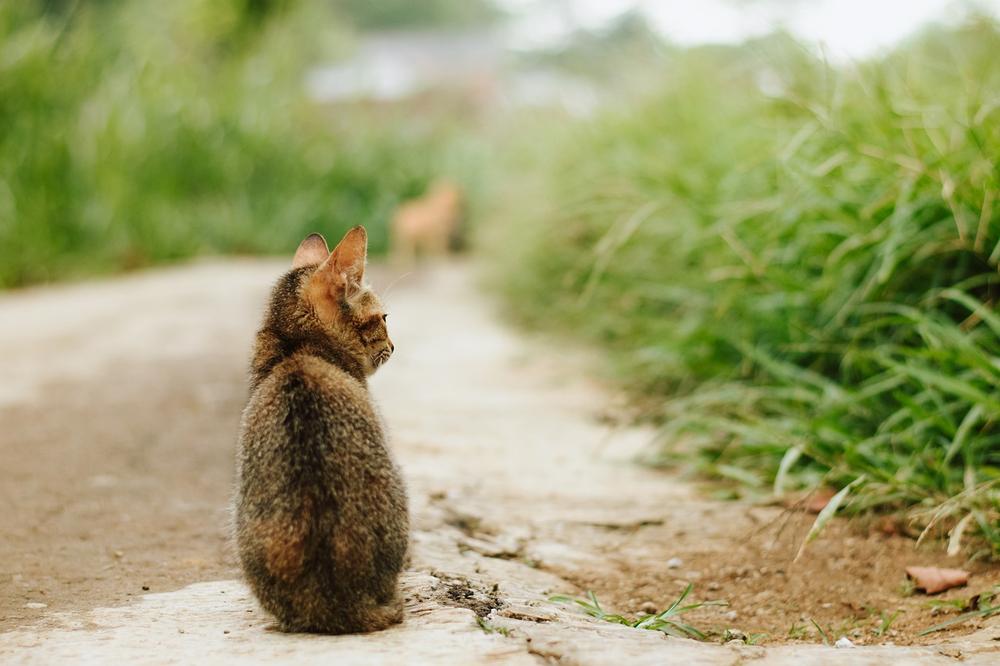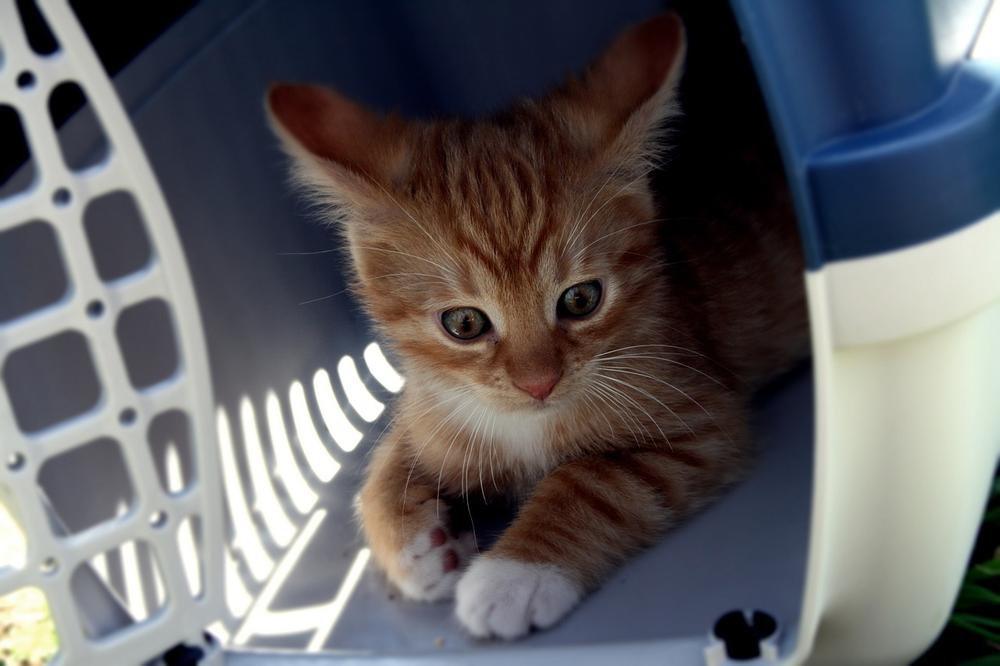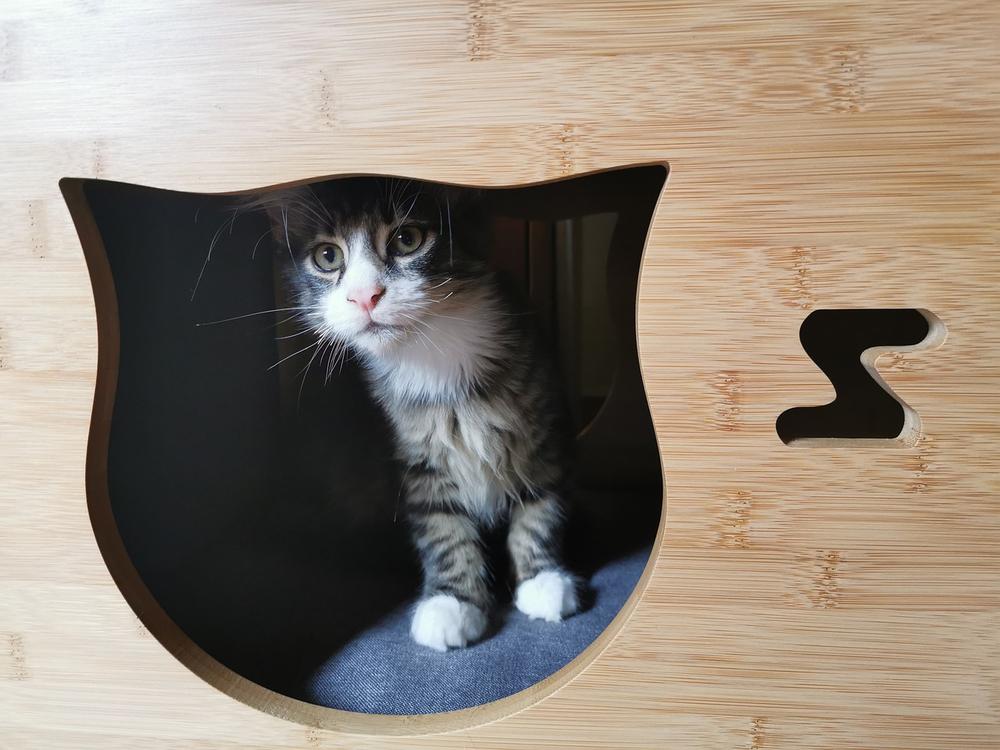How to Train a Stray Cat to Use a Litter Box (Easy Useful Guide)

So you've found yourself determined to help a stray cat safely.
But let's be real, it's not easy, is it? 😅
I mean, those little furballs can be quite elusive.
But fear not, in this I Care for Cats guide, I'll spill the beans on how to train a stray cat to use a litter box.
Trust me, you don't want to miss this, or you'll be scraping poop off your carpet for days.
Let's get started!
Empowering Stray Cats through Positive Reinforcement in Litter Box Training
Training stray cats to use the litter box requires dedication and patience.

Here are some strategies that can help you with this rewarding process:
- Reward your cat with treats when they use the litter box correctly. This positive reinforcement will create a good association.
- Avoid shouting or punishments. Instead, use praise, petting, or clicker training to encourage your cat. They respond better to gentle encouragement.
- Spaying or neutering older cats can support successful litter box training by reducing marking behaviors related to reproductive instincts.
- Enhance litter box use by combining treats with feline calming pheromones. This can further motivate consistent behavior.
- For orphaned kittens, introduce them to the litter box as soon as possible since they don't have a mother's guidance. With kittens who have moms, start their litter box training at around 4 weeks old.
- Provide intensive training for feral and stray cats. Though challenging, these cats can still be trained with persistence and patience.
- Consider rehoming socially isolated cats. Giving them new homes can greatly improve their litter box behavior and overall well-being.
Through grasping cats' social ranking and utilizing these suggestions, you will develop litter box patterns that will advantage homeless cats in their forthcoming residences. 😺
Main points I'll expand upon further down this article:
- Establish a routine for litter box training by gradually moving the box closer to its desired location.
- Track litter box usage by keeping a diary.
- Show the cat how to dig in the litter with your finger.
- Confine the cat to a small space with a litter box filled with soil to prevent accidents.
- Choose a natural, unscented litter that is comfortable for the cat.
- Transition from outdoor to indoor litter use gradually over several weeks.
- Create a safe and comfortable environment with the right litter box and litter.
- Consider the size and type of litter box based on the cat's needs.
- Utilize natural cat litter attractants or deodorizers to maintain freshness.
- Incorporate natural elements like leaves or twigs to assist with differentiation in the litter box.
But how exactly do you go about training a stray cat to use the litter box?
Well, here's what I've learned and what has worked for me...
Establishing a Routine for Litter Box Training a Stray Cat
Establishing a routine for litter box training a stray cat is essential for success.
Follow these steps to create a consistent and positive environment for your cat:
- Gradually move the litter box closer to its final location over time. This helps the cat adjust at its own pace.
- Accompany each step with positive reinforcement and rewards. Use treats, praise, and petting to encourage good behavior.
- Place the cat in the litter box upon waking and after meals. This helps establish a bathroom routine.
- Keep a diary to track litter box usage. Note when the cat uses the litter box successfully and any accidents that occur. This can help identify patterns or issues.
- Confine the cat to a small space with a litter box filled with soil. Show them how to dig in the litter using your finger. This encourages them to use the litter box instead of going elsewhere.
- Choose a natural, unscented litter that is comfortable for the cat to walk on. Avoid litter with strong scents as it may discourage the cat from using the box.
- If the cat was previously an outdoor stray, transition from outdoor to indoor litter use gradually. Start by changing the substance in the litter box to clay over several weeks. Also, slowly move the litter box closer to the house to help the cat adjust to the new environment.
Train your stray cat to consistently use the litter box and prevent any accidents in the house by simply following these steps. 😉
So, if you're in the process of litter box training a stray cat, establishing a routine is crucial.
Following the steps I've shared above will help create a consistent and positive environment for your furry friend.
But what if your adventurous feline ever goes missing, especially during the chilly winter months? In that case, I highly recommend you check out my article, How to Find a Lost Cat in Winter.
It's filled with valuable tips and guidance on finding your beloved pet from expert search results.
Don't worry, there's hope, and I'm here to provide you with the information you need.
Let's ensure your cat's safety, no matter the circumstances.
Creating a Safe and Comfortable Environment for Litter Box Training
To create a safe and comfy place for your cat to learn how to use the litter box, here's what you gotta do:
- Give them lots of litter box options - variety is key.
- Find a big box with low sides so they can easily hop in and out.
- Keep the litter box far away from their food and water.
- Go for an open box with high sides to prevent any messes.
- Make sure the box is long enough for your cat to stretch out comfortably.
- Use clumping litter so it doesn't stick to their paws.
- Avoid scented litters since some cats have allergies.
- Beginners might prefer pellet-based litters, so keep that in mind.
- For stray cats, go for fine-grained sandy litters.
- Add natural attractants or deodorizers to make it more appealing.
- Start with a mix of soil and litter for those stray cats.
- Toss in some leaves or twigs to make it feel more natural.
- Create a quiet and private space for them - no loud noises allowed!
- Begin by confining your cat to smaller areas at first.
- Spritz some artificial feline pheromones around to help them feel calm.
- Set up vet visits for health check-ups during the training process.
- Limit their space as they get used to using the litter box.
To succeed in training your cat to use the litter box, you need to consider their individual needs and background.
And now, let me share with you some key tips to ensure successful litter box training for your stray cat.

This section will cover everything from handling accidents to understanding the importance of neutering.
Trust me, these insights will make all the difference in creating a happy and litter-trained feline companion.
So, let's dive right in!
Common Mistakes to Avoid When Training a Stray Cat to Use a Litter Box
When training a stray cat to use the litter box, there are common mistakes that you should avoid:
- Scolding or punishing the cat for accidents outside the litter box can create negative associations and hinder progress. Instead, focus on redirecting the cat to the litter box and reward appropriate behavior.
- Make changes gradually and slowly, as sudden changes may overwhelm the cat and result in resistance to using the litter box.
- Keep in mind that unaltered cats over 6 months old may still have the tendency to spray even after being fixed. If spraying occurs, use deterrent sprays and products, and employ odor neutralizers to prevent marking.
- Neutering male cats often helps stop spraying behavior, so consider getting your cat neutered if they haven't been already.
- Don't punish the cat for not using the litter box, as it is not an effective method. Instead, rule out any health problems before starting the training process.
- It is important not to leave the cat unsupervised until they consistently and reliably return to using the litter box on their own.
Successfully teaching a feral cat to utilize the litter box can be achieved by eluding these prevalent errors and adhering to these recommendations.

When training a stray cat to use the litter box, there are common mistakes that you should avoid.
However, if you're dealing with a teething kitten who tends to bite, managing their behavior can be an additional challenge.
In situations like these, I advise you to check out my article, Do Kittens Bite When Teething, where you can find valuable information and helpful tips on handling this biting behavior.
Addressing Fear and Anxiety in Stray Cats
For your furry feline friend, make sure there are snug spots near the litter box.
These cozy hiding places provide solace when they're feeling uneasy or tense, granting them a sense of safety in their fresh surroundings.
Keep an eye on those litter box visits and stray kitties' behaviors.
It's key to detect any red flags like illness or dissatisfaction—hints of feline leukemia may include sluggishness, shrinkage, paleness, or breathing troubles.
If you catch any lingering stress-related problems, don't hesitate to seek support from an expert behavior counselor. They can lend a hand in finding solutions for both you and your four-legged companion.
Tips for Introducing Multiple Litter Boxes
Here's some advice on setting up multiple litter boxes for your cats:
- You gotta put the litter boxes in different spots around your house so all the cats can easily get to them.
- If you've got more than one cat, it's a good idea to have multiple litter boxes in different places. That way, they won't fight over the box or crowd each other.
- Once your cat gets the hang of it, you can give them access to more parts of the house. But always make sure there are enough litter boxes for them.
- Having lots of litter boxes and creating extra "cat spots" can create a peaceful atmosphere for all your cats.
- Do not – I repeat, DO NOT – put all the litter boxes in one room. This can lead to big boss cats attacking or scaring others while they're using the box. No bueno.
- If you have stairs in your home, it's a good idea to put at least one litter box on each floor. Older or less agile cats might have a hard time climbing up and down.
- Try out different types of litter boxes (open or covered) to see what your cats prefer. Some cats are picky about the style of their boxes.
- And remember, clean those litter boxes regularly! Cats are clean freaks and will find somewhere else to go if the boxes get dirty or gross.
- Keep an eye on your cats' behavior around the litter boxes. If you notice any problems or conflicts, it might be worth getting advice from a vet or animal behavior expert.
Having multiple litter boxes is really important to keep a healthy and stress-free environment for all your furry buddies.
Don't forget to take care of their potty needs!
Handling Accidents and Encouraging the Use of the Litter Box
Cleaning up accidents and discouraging repeat behavior
Accidents happen, we understand!
But when your cat chooses to mark their territory outside the litter box, you're left with an unpleasant situation.
No need to worry - here's what you can do:
First of all, make sure you clean the soiled area thoroughly.
Using a special enzymatic cleaner is important in this case.
It not only eliminates the smell but also helps deter your cat from using that spot as their bathroom.
Pretty smart, huh?
Now let's talk about the litter box itself.
Keeping it clean is crucial, my friend.
Scoop out any solid waste once a day and change the litter twice a week.
Believe me, your cat will appreciate the cleanliness.
Encouraging litter box usage
But what if your furry friend refuses to use the litter box altogether?

Well, we've got a few tricks up our sleeves:
Start by putting a small amount of waste in the litter box as a gentle reminder for your cat.
Sometimes they just need a little nudge in the right direction. If you find any stray waste outside the litter box, always put it back where it belongs and clean the surrounding area.
And don't forget, consistency is key.
Make sure you regularly empty all the litter and give the box a thorough cleaning.
Remove any solid waste on a daily basis and completely change the litter on a regular schedule.
You might want to consider using cleansers made with enzymes for those extra stubborn messes.
Extra tips for preventing accidents
If certain areas in your home have become frequent targets for accidents, it might be time to rearrange things a bit.
Changing the layout can discourage your cat from repeating bad habits.
Stay attentive and keep a close eye on them during this transition.
Lastly, always keep good hygiene in mind by maintaining proper litter box cleanliness.
Your cat deserves a fresh and odor-free space to take care of their business, so be sure to stay on top of it.
Because when your cat is happy, everyone is happy!
And that wraps up today's article.
You've reached the end of my blog post, so I have a question for you: Did you enjoy it? I dedicated a long time to crafting comprehensive and useful blog posts, pouring all my effort into them. It's incredibly rewarding for me, so it would mean the world if you could help spread the word by clicking on any of the social sharing icons and sharing this post with others. Thank you so much for your support!
Talk soon,
-Sarah Davis